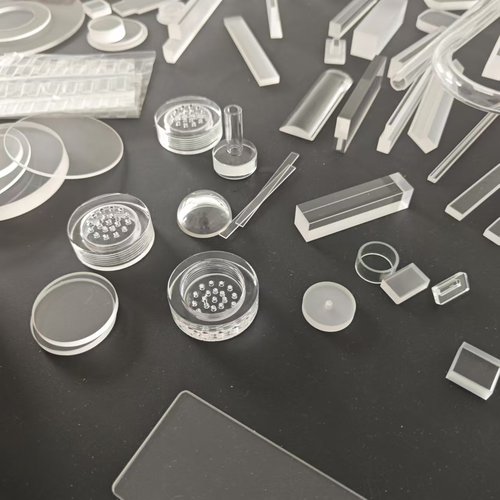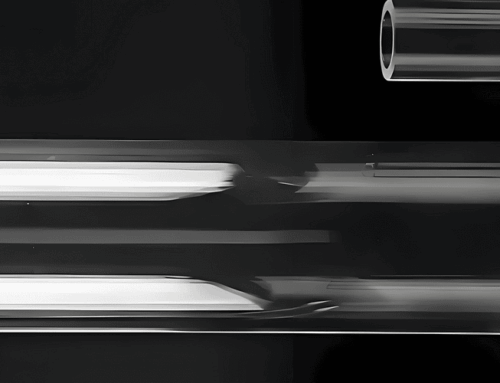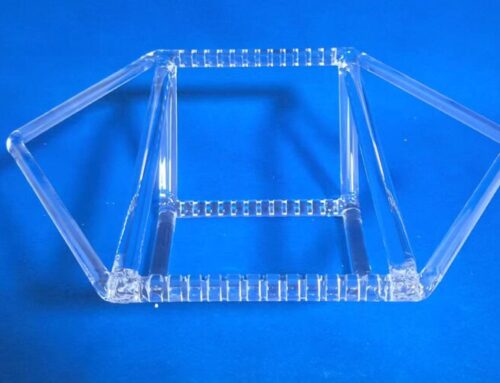The performance of quartz glass is primarily influenced by the quality of the raw materials and the manufacturing process. If the purity of the raw materials is insufficient, the produced quartz glass may exhibit a range of defects, including bubbles, air lines, impurities, high hydroxyl content, and severe crystallization. These issues can lead to substandard performance of quartz glass in various ways. If the process is not strictly controlled, the defects in hydroxyl group, internal stress, stripe and microstructure will also reduce the performance index of quartz glass.
- Impuritiesin the raw materials
- Alkali metal
Alkali metals such as Li, Na and K have a strong fluxing action in the structure of fused quartz glass, leading to the devitrification and deformation of quartz glass in high-temperature applications. Secondly, alkali metals will affect the thermal and optical properties of quartz glass, which in turn reduces the service life of electric light sources and semiconductors. In addition, alkali metals can also increase the dielectric coefficient and dielectric loss of quartz glass, affecting the dielectric properties and mechanical strength of quartz glass.
- transition metals
Transition metals, including Fe, Cr, Mn, Ni, and Cu, exhibit a range of oxidation states, often manifested in specific colors. This phenomenon has a significant impact on the quality of fused quartz glass. For instance, trace transition metals will reduce the conductivity of fused quartz glass, playing a negative role in the reliability and predictability of the instrument. This will also give rise to the color spots or high temperature discoloration upon the surface of the quartz glass, thus affecting its light transmission performance.
- Elements Al, B, Ti, etc.
The content of Al, B and Ti in quartz is directly related to the geology of the deposit. These elements, when present in the quartz lattice, can form strong chemical bonds, which are the most challenging impurities to remove from the quartz. The excessive content of these elements will have a significant impact on the crystallization of quartz glass, resulting in the formation of hard and brittle quartz glass with reduced strength.
- Impurities of inclusions
Natural quartz usually contains mineral inclusions. Due to the minute particle size and tight enclosure of the inclusions within quartz, it is difficult to remove the mineral inclusions and fused inclusions by selecting and smelting method without damaging quartz crystal itself. In addition, the impact of fluid inclusions on high-purity quartz is also evidenced by the presence of various metal ions within the fluid inclusions, which is also one of the main factors affecting the purity of quartz.
- Hydroxylgroup
As impurities and structures in quartz glass determine its physical and chemical properties, the presence of hydroxyl group in quartz glass can change the continuity of quartz network structure and further influence its properties. The presence of hydroxyl group will also reduce the chemical stability, structural strength, heat resistance and optical uniformity of quartz glass.
- The presence of hydroxyl group will change the physical and chemical properties of quartz glass
The excellent performance of quartz glass mainly depend on the stable tetrahedral structure of [SiO4]. When there is a hydroxyl defect, it will break the Si-O bond in the Si-O-Si network, thereby increasing the porosity of the structure, reducing the chemical stability, density and viscosity of quartz glass. As the presence of hydroxyl groups enhances the flexibility of the Si-O bond, so it will increase the Young’s modulus (E) and torsion modulus (G) in quartz glass while reducing its softening temperature and promoting crystallization.
- The presence of hydroxyl group will affect the optical properties of quartz glass
In fused quartz glass produced by electric melting, the hydroxyl group mainly comes from the fluid inclusion in the high-purity quartz sand as raw material. In fused quartz glass produced by gas refining, the hydroxyl group mainly comes from the oxyhydrogen flame, because the hydrogen and water can easily react with the oxygen in silicon dioxide to form the hydroxyl group. The quartz glass prepared by plasma melting often has high purity and low hydroxyl group.
- Bubble
The fluid inclusions will not burst completely during the process of quartz melting, and those fluid inclusions that do not burst before melting will form bubbles in the fused quartz glass. The high viscosity of fused quartz renders the removal of bubbles particularly challenging. Consequently, the preparation of quartz glass requires the selection of raw materials exhibiting a low impurity content, with a limited number of inclusions or with inclusions that have exploded.
The uneven distribution of particle size within the raw material will result in the formation of bubbles and micro-nuclei in the quartz glass. For example, in the melting process, the difference in surface activation energy results in the preferential melting of small-particle quartz over large-particle quartz. The melted quartz will coat on the surface of the unmelted quartz, making it difficult for the large particles to melt completely. This results in the formation of defects on the particles, the creation of particle crystal nuclei, and the acceleration of crystallization. In addition, the high content of gas within the gap between small particles renders the process of melting exhaust more challenging.
The particle shape of the raw material is also one of the reasons that affect the formation of bubbles in quartz glass. In the melting process of high-purity quartz sand, the acicular particle with a large length is easy to form scaffolding-like structures, resulting in a lack of smoothness in the material, giving rise to bubbles in glass products. In order to reduce the occurrence of the scaffolding phenomenon and enhance the fluidity of quartz sand, it is essential that the quartz sand be granular in nature and exhibit a length-to-diameter ratio as close to 1:1 as possible, which approximates a spherical shape. Therefore, the particle size distribution and particle shape of the raw material must be strictly controlled.
In general, the poor quality of quartz glass can be attributed to two primary factors: the purity of the raw materials and the manufacturing process. Therefore, it is necessary to improve the performance of quartz glass from two aspects: the treatment of quartz raw materials and the core technology of quartz glass production.





